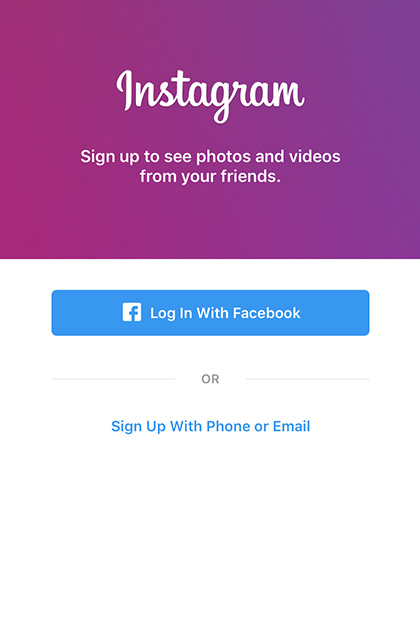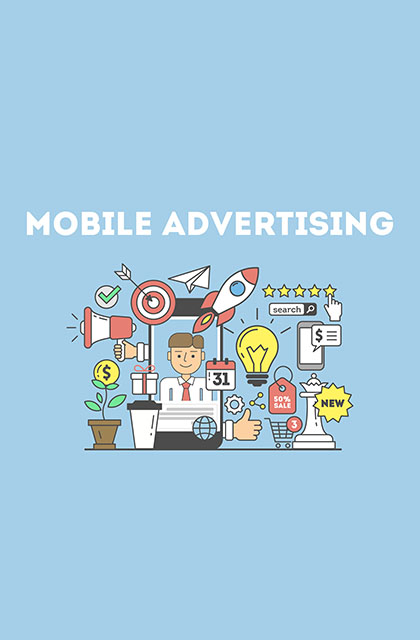The Real Estate Agent Ultimate Guide to Social Media Marketing in 2023
The all-in-one resource to guide you through the world of social media marketing.
Learn more about working as a real estate agent and get exclusive offers!
So you're interested in getting your real estate license and want to learn how to market yourself? Maybe you just got licensed and have no idea where to start looking for clients. Perhaps you have been an agent for years and are looking to step up your game. No matter the circumstance, we've got you covered. Here at AceableAgent, we've put together this all-in-one resource to guide you through the world of social media marketing for real estate.
More than likely, you're no stranger to sharing your life online. In this day and age, about 70% of Americans are on social media regularly. The top platforms, even though there are only a handful, account for quite a disproportionate amount of total online activity across the country (and the world). Most people spend over two hours on social media every day. The audience is there, and it's yours for the taking! And no, we don't mean you should kidnap anyone...
In this two-part post, you'll learn all about:
- Why Social Media is so Valuable
- Types of Social Media
- How to Reach Your Target Audience
- Best Practices for a Social Media Presence
- How to Set Achievable Goals
- Social Media Metrics
- Social Media vs. Other Forms of Advertising
- Types of Advertising Methods
Let's dive right into the first topic.
Why is Social Media so Valuable?
Social media is defined as websites, apps, or platforms that facilitate public online sharing of information, discussion, content, or commerce in a social or professional community

Although the medium was born rather recently and has already evolved quite a bit, social media is not just a fad. It has permanently changed the way we communicate with each other, consume content, and of course, see advertisements. Social media is valuable for real estate agents simply because everyone is on there. It's always up-to-date and gives you many options for building your network effectively.
One of the primary reasons to invest in social media is that all your marketing efforts will be backed by data. Social media users, either knowingly or unknowingly, provide an incredible amount of data about themselves on the various platforms - everything from the information they post publicly, to their browsing habits and interests. Of course, when all users sign up and check that "I agree" box that no one actually reads, they are volunteering this information over to marketers.
Because of this, you are able to target your audience directly, with laser-precision. For example, if you want to advertise to Facebook users who are actively searching for homes in a specific area -- your "farm" -- you can absolutely make sure your message reaches their newsfeed. Being able to use social media data to access your target audience means you'll get the right eyeballs on your content.
Millennials (aged around 22-37 years old) are currently the largest demographic of homebuyers, and we've all heard about their relationships with the 'Gram, among others. Let's say you want to niche down and specialize in selling to first-time homebuyers. You might determine that Facebook and Instagram are a good way to reach the population of a mostly middle-class neighborhood with several apartment complexes. You're looking to target young renters that are financially comfortable enough to buy a home in the near future. In this situation, you could run a simple ad that shows a few starter homes in the area to swipe through, with your name, photo, broker, and contact info displayed.
Compared to a newspaper ad, few millennials regularly read the paper, or a TV commercial, expensive, social media is the way to go.
Most social media platforms also give you some form of an analytics tool. Depending on the platform, you can see how many people saw your post, when they viewed it, how they interacted with it - such as liking, commenting, or sharing. Compared to the feedback you might get with a newspaper ad, this is an insane amount of data readily available to you. We'll cover metrics and analytics in more detail later on.
If you're still not convinced whether social media is worth it, let's discuss the cost.

It's completely free to set up a social media account (for the mainstream platforms anyway). You just need an email address. Most platforms will come with a basic analytics dashboard as default, and if you like, you can pay for a specialized marketing-focused account to make sure your message is getting out there as effectively as possible.
Now, social media will cost you time, effort, and talent. Running and maintaining social media accounts is a time-consuming task. It may only take a few seconds to update your status, but you'll have to consider the effort it takes to build a constant stream of various content, including, but definitely not limited to text, videos, home listing links, and designed images and graphics.
The key is to stay consistent, keep your audience entertained, and remind them of your presence. It may be a good idea to hire someone to manage your accounts for you, especially if you haven't mastered the habit yet, or just have more cost-effective things to do with your time. Time is money, people.
Of course, the burning question is: How much does it actually cost to put an ad up on social media?
It depends.
If you advertise through Facebook, you'll probably be charged on a cost-per-click (CPC) basis. The average CPC is $0.27 per click. As of 2016, the average total cost for a Facebook ad was $7.19. This obviously will vary depending on how many people see your ad and interact with it. Other factors include the type, quality, objective, and add-on features of the post. However, the bottom line here is that many basic social media advertisements are a cheap and effective way to communicate with your audience.
To summarize why social media is a valuable marketing tool in today's world: Most internet users are heavily engaged with social media, especially young adults (the largest percentage of homebuyers). You can target your audience with precision. All actions are backed by data. They are trackable. Social media ads are the best bang-for-your-buck method of advertising today.
Convinced? Great!
Now let's discuss the different types of social media out there.
Need To Renew Your Real Estate License?
Renew your license with our 100% online continuing education course today!
Types of Social Media
We've all heard about Facebook, and likely Instagram and Twitter. Most people can easily name ten platforms off the top of their head, but have you ever sat down and contemplated the differences between them? Well, you're about to so buckle up, baby.

The big boy. The giant of social media. Facebook has pretty much been the social media since around 2004. 7 out of 10 American adults that use the internet are regularly on Facebook, according to Hootsuite. Breaking it down further, 80% of millennials (again, the largest homebuyers today), are regularly scrolling their feeds. User size diminishes with the older generations. However, it is by far the most effective way to reach those demographics when compared to other platforms. For example, if your niche is selling homes to retirees, you will undoubtedly be better off advertising on Facebook than Snapchat. When was the last time you saw your mom (or grandma) take a dog filter selfie?

The home of 30-second makeup tutorials, artistic food, and fitness pages galore. Instagram is incredibly focused on the aesthetic appeal of all things in the world. It just so happens that the business of marketing homes relies heavily on the visual. The user base definitely skews younger than Facebook, but it's a great tool for gaining clients and advertising to those in their 20's and 30's.
55% of online adults aged 18-29 are on the 'Gram regularly and about one-third of adults aged 30-49. Instagram's content typically consists of eye candy and the luxuries of life, think yummy feasts, Lamborghinis, and luxury homes. If your niche is apartments or luxury properties, you'll rake in those double-taps.

Twitter is growing fast as a go-to resource for news, information, and customer service. It is also heavily used by the entertainment industry, such as for TV shows, musicians, and celebrities. And of course, it's well-known for companies roasting each other. We're looking at you, Wendy's.
About 40% of online adults aged 18-29 use Twitter, according to a study from the Pew Research Center. Another 23% of those in the 30-49 bracket use the platform, as do 21% of online adults aged 50-64.
Snapchat

Snapchat dominates as the social media favorite among teenagers. It's all the rage in high schools right now. It also has a large number of Generation Y and Generation X users. In fact, 37% of Snapchatters are 18-24 years old, while 26% of the platform's users are 25-34 years old, according to Hootsuite.
Snapchat offers a quick and easy way to upload photos and videos of properties without having to worry so much about the quality of those videos. Remember how we said Instagram is all about visual presentation? Snapchat is a bit more lax about that. Think of it as a more raw, real way to present. It can be used as a simple tool for giving clients a virtual tour of a home when you don't have time to film, edit, and upload a video to YouTube. Content on Snapchat famously disappears after 24 hours, so you won't ever have to look back at your old video quality and cringe.
YouTube

It's where you go to find tutorials, news, and that song that's been stuck in your head all day. YouTube is the second largest search engine, producing more than 3 billion searches per month. That's more than Bing, Ask, AOL, and Yahoo combined!
49% of Generation Y watches YouTube videos daily and 35% of Generation X said the same, according to a survey conducted by Influenster and published by Adweek. The great thing about YouTube is that you can get away with being as professional or as simple as you want. We recommend using a short intro and outro, and being as to-the-point as possible. The last thing you want people doing is having to skip around your videos to find what they're looking for.
The best part about YouTube is that anyone with an internet connection can use it. There's no need to make an account to view a video, and if you do sign up, all you need is a Gmail address. You can send a video link to anyone and they can view it with zero commitment, unlike other social media platforms.

LinkedIn is the world's largest social network for professionals. You'll find fewer bathroom mirror selfies and more resumes. LinkedIn can land you jobs, leads, or simply legitimize your status as an active real estate agent to the general public. If a client asks for your credentials or how you got licensed (AceableAgent, right?), you can easily show them your professional history, referrals, and business connections on your profile.
LinkedIn reports that of its 467 million users, 40% use the site daily. Furthermore, 57% of companies have a LinkedIn company page. It's not all businesses and resumes, though. Over a million professionals have published a post on LinkedIn, making it a viable platform for professionals to showcase their expertise in their field. Why not share your knowledge and (some) techniques about your niche?
There is seldom a wrong time or place to share content among social media platforms, but keep your strategy in mind at all times. You want your message to reach the right people in the right frame of mind. Remember that not all platforms are created equal. They have different styles, audiences, and guidelines for success.

Your chance of connecting with potential clients greatly increases when you have an active social media presence, especially across an array of platforms. Be careful not to put all your marketing eggs in one basket. Also, don't ditch your existing marketing approaches altogether. If you see a high conversion rate from tangible ads (mail, signs, etc.), or other marketing methods, keep it up! Social media should be used to compliment your existing efforts to create one streamlined strategy to get your message out there.
How to Reach Your Target Audience
We have talked about why social media is a valuable use of your marketing efforts and identified the differences among the popular platforms. Each site tends to be geared toward a certain age group and there are unofficial rules about which type of content belongs where. Let's now discuss social media trends and how to get into the heads of your audience.
Social media started as a trend of itself but has now permanently changed the way we communicate. We are now seeing trends within the platforms which are shaping into new marketing opportunities.
Social Messaging

The largest private social media messaging platforms, Whatsapp and Facebook Messenger, each have over a billion monthly users. Social messaging platforms can be integrated within a social media platform, allowing for private communication between parties, or as a standalone site. Whatsapp works this way. As they become more popular they are gaining new features and functions. Just like social media, there's an array of social messaging platforms catered to each occasion: professional, business, personal, gaming, and so on.
Social messaging channels have clearly been established as the preferred form of communication for millennials. It offers them a way to communicate with businesses on a convenient, personal, one-on-one level - all without having to actually talk to anyone. Good to know, since 3 out of 4 millennials prefer messaging to voice communication.
Some businesses see such value in social messaging that they've set up their Facebook ads to take customers who click on an ad directly into a chat window with the business. Expect to see more businesses and platform utilize this method of service as time goes on. Consider how it may affect you as a real estate agent.
Chatbots
If you're on social media you have probably seen chatbots. Some companies use them within their own websites as well. When you open the page you are greeted with a preset message within a chat box. Oftentimes, the bot is presented as real-time human. Some are more believable than others. You may choose to respond and start a conversation. This is a great way to get a simple question answered instantly, or to begin the sale process. Chatbots offer visitors instant customer service with the style of social messaging. In many cases, the chatbot will carry on a conversation just long enough for an actual customer rep to contact you directly.
Live video
Facebook Live became a huge trend in recent years and other platforms have followed suit, such as Instagram, YouTube, and Twitter. Just as the term describes, account holders can broadcast live video feeds to their followers. This is a great use for: Introducing/demonstrating new products and services Live streaming events, such as open houses or real estate conferences Celebrating milestones and special occasions Hosting AMA's. A dedicated follower base may enjoy AMA (Ask Me Anything) sessions, where they can ask you for advice or answers to more personal questions.
Augmented and Virtual Reality

360-degree video has been around for a few years now. It's an awesome tool to use for home listing pictures, making them interactive and easier to picture how floorplans are laid out.
A new trend that has branched off of this is augmented and virtual reality. Augmented reality overlays computer-generated images, video, and games, onto real-world environments. Virtual reality is the creation of a computer-generated simulation where the participant is just about the only real thing in the fantasy environment. There is a possibility for this to be used to view homes in the near future, giving clients a simulation of a walkthrough before going to see the actual property.
Advertising Demand

As the world moves to mobile, business follows with mobile-friendly sites, communication, and service. In turn, the demand for mobile advertising is on the rise. We previously discussed the average cost of Facebook ads, and we'll cover the subject in more detail, but you can expect higher premiums over time. Why? Because everyone wants their message heard.
In 2016, 80% of Facebook's revenue was generated via mobile ads. Twitter, which is more mobile-focused, enjoyed a bit more. There is a limited amount of traditional ad space on each platform and a steady increase in demand.
Social eCommerce
Not only have social media platforms offered ad space for businesses, but they have made it possible for consumers to buy products and services from those ads within the platform. In these scenarios, you are not having to direct traffic away from the social media environment. People can see your ad, support your business, and go right back to scrolling their feed (which is exactly what all social media platforms prefer).
According to Aimia, a loyalty analytics company, 56% of people who follow brand pages on platforms such as Facebook, Instagram, or Pinterest, do so with the intent of seeing featured products. They want to stay up to date with what their favorite product is doing and to see what the brand is going to come up with next. Offering an all-inclusive stop to experience and buy from that brand within the platform is a no-brainer for those with a dedicated follower base.
Keeping all these upcoming trends in mind and having a strategic attitude about them will undoubtedly propel your real estate practice to the cutting-edge state.
The key is to stay a step ahead of your audience. You want to be there before they arrive, and you're left behind, or become "behind with the times". Use this mindset in your approach to gaining clients. The idea is to step into their path before they are in the "find an agent" stage of looking for a home. That way, when they are ready to look, you have the chance to be fresh on their mind in a positive light. For example, informative YouTube videos that address things to think about when entering the home buying market in your area could be a way to insert yourself fairly early into your prospect's purchase process in a manner that they would find helpful and non-threatening.

Before we wrap up this point, let's cover a few marketing preferences of those on social media.
Millennials are the largest buyer of homes and most of them are on social media. According to a 2016 realtor.com survey, where they were given three choices of ad styles, 54% like brief and to-the-point ads. 53% liked entertaining ads, and 41% wanted funny ads. They also prefer to exposed to preferred ads on more than one platform. In other words, it might be a good idea to try and reach the same people on both Instagram and Twitter.
If you have been selling homes for a while now, you'll know that people buy homes with their emotions. Sure, they research facts, data, and history, but they often just use these to justify their emotional attachment (or detachment) from a home. The same can often be said when buying a car or making an impulse purchase. Use the ethos aspect to appeal to your prospects.
Furthermore, you'll want to exercise common sense and be meticulous when it comes to content creation and ad placement. If you're selling a million dollar home and decide to advertise to a college campus area on Snapchat at three in the morning, well, how do you think that'll work out for you?
Best Practices for a Social Media Presence
Now that you've learned the basics, let's put it all together into a plan that's easy to understand. Best practices are defined as commercial or professional procedures that are accepted or prescribed as being correct or most accurate. These are your building blocks for an effective plan.
In your social media strategy, these are the main things to define before executing your master plan.
- Goals
- Target audience
- Target platforms
- Content types
- Publishing frequency
- Paid advertising approach
- Customer service processes
Goals

Your goal is likely: "To gain clients." However, this can be customized to fit whatever you want to accomplish. You might have a high-priority sale and decide to create an advertising campaign for that one property. In the next section, we'll talk more about goal-setting.
Target Audience
Before you can research your target audience, you need to identify who you want that to be. And no, the answer can't just be: "Any living, breathing human." While it may seem like a good idea to target literally everyone, it's way better to narrow down your focus to a specific audience that is likely to need your services. The best way to figure this out is to look back at who your past clients have been. Who are they? Where are they? What age range have you worked with the most? Maybe you've been comfortable with them. Maybe you haven't been successful with these clients and are looking to switch things up. Either way, develop a clear idea of who you want to do business with.
Target Platforms
Your target platform should coincide with your audience. Time for a quick review.
Facebook is the most widely used platform among all demographics. Twitter has a younger and educated audience. Instagram is even younger, skewing mostly toward those fresh out of college. Snapchat has the youngest audience with 23% of that audience still in high school. LinkedIn houses professionals and career-seekers. YouTube users tend to be in the 18-24 age range.
Feel free to creep on your competition. You know, in a non-creepy way. Researching and staying on top of the competition is a great way to see what's working, and what isn't working for them. Use this information when plotting your strategy to get the upper hand. Of course, you shouldn't copy them to a tee. And you definitely shouldn't steal their content, which brings us to the next topic.
Content Types
The golden rule of content creation is staying consistent. It can be hard to get started, but once everything is in motion your followers will keep you in the habit of creating and your ideas flowing.

Here are some more tips to keep in mind.
Quality over quantity. People tend to not like having their feed clogged up with one topic. You know, like when that one friend gets fired up every election year and you temporarily unfollow them. You don't want to be that guy. It's best to focus on producing good content on a less frequent basis. For example, you'll likely get more engagement posting one long, relevant blog post than you would for five or six shorter ones. Don't just post "something" for the sake of having a full page. Take some time to research and form your words well. Put it all together in one place.
Storytelling is powerful. People connect with stories. If you can include the element of storytelling in your post, your clients (and potential clients) will be able to connect with you more easily, both mentally and - sniff - emotionally.
Infographics can go "viral". Infographics display data and information in a visually-pleasing graph form. They help people understand complex data more easily and have the potential to be very shareable. Let's go viral, people!
Here is an example of a great infographic.

Be unique. Creating unique content on topics that have been extensively covered can be tricky, but try to put your personal spin on it. Think about your experiences and perhaps bias that you have for a topic and share that with your audience. Write in a style that gets conversations going and gears turning.
Keep up with the trends. One way to create engaging content is to write about what's trending. If you've ever gone to the social media page of a radio station, you'll notice they hardly ever post content about the station itself. They post engaging, conversational topics about trending topics like news, memes, personal experiences (funny social awkwardness is a favorite), and anything else that is happening in the world. As a real estate agent, you may not want to adopt the radio station example, but it never hurts to post something trending that people can identify with.

Dont Forget To Check Out Part Two!
Learn more about how to best use social media as an agent with the second part of our guide!
Laughter is key. It's no mistake that most of the YouTube videos you see shared on Facebook. People love to laugh and share that laughter with others. You don't have to make funny videos, but you should definitely try to include humor in your writing if and when possible. You know what they say: Laughter is the best way to get leads. Oh, and it's also the best medicine or something.
Be positive. It outperforms negative content. People don't want to follow a Debbie Downer, even if that is the name of a popular Facebook page.
Timing is everything. Publishing content at a bad time or on a bad day can mean no one will see your content. You want to make sure you're posting at the optimal time for each platform.
Remember to just be yourself. The more comfortable you are with your audience, the more at home they'll feel when interacting with your content.
Here at AceableAgent, we hope you have learned a lot about social media marketing! This has been part one of this two-part series.
